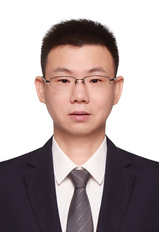李 炜 青年研究员 复旦大学博士 电话:+86-21-31249021 E-mail:w_li@fudan.edu.cn 个人网站/Website:链接/Link 主要经历:(Experiences) 2016.1-2017.10中国科学院上海微系统与信息技术研究所副研究员 2013.7-2015.12中国科学院上海微系统与信息技术研究所助理研究员 2013.6复旦大学物理学系博士 2011-2015间先后访问美国德州超导中心、美国加州州立大学、德国于利希研究中心和香港大学等 教学与研究领域: 研究领域:低维量子功能材料体系中的新奇物态研究。目前,主要聚焦于氧化物异质界面超导电性方面的理论与实验相融合研究及其实现量子物态调控。迄今为止,已经在国际权威学术刊物Nature Communications、Advanced Materials/Science、ACS Nano/Nano Letters、Physical Review B/Research等上发表高水平SCI科研论文近80篇。2015.5获上海市优秀博士学位论文奖。2015.10入选中国科学院青年创新促进会。 Wei Li Associate Professor Ph.D.(2013), Fudan University Research Interests: Selected Publications: 1) G. Zhang and W. Li, et al., Unique quantum metallic state in Ti2O3/GaN, ACS Applied Electronic Materials 6, 7915 (2024). 2) Z. Ning and W. Li, et al., Coexistence of ferromagnetism and superconductivity at KTaO3 heterointerfaces, Nano Letters 24, 7134 (2024). 3) G. Zhang and W. Li, et al., Spontaneous rotational symmetry breaking in KTaO3 heterointerface superconductors, Nature Communications 14, 3046 (2023). 4) Z. Fan and W. Li, et al., Emergent intrinsic ferromagnetism in two-dimensional trigonal rhodium oxide, Nano Letters 23, 9515 (2023). 5) H. Xue and W. Li, et al., Fourfold symmetric superconductivity in spinel oxide LiTi2O4(001) thin films, ACS Nano 16, 19464 (2022). 6) L. Wang and W. Li, et al., Two-dimensional superconductivity at the titanium sesquioxide heterointerface, ACS Nano 16, 16150 (2022). 7) D. Jiang and W. Li, et al., Strong in-plane magnetic field induced reemergent superconductivity in the van der Waals heterointerface of NbSe2 and CrCl3, ACS Applied Materials & Interfaces 12, 49252 (2020). 
2017.10-至今复旦大学物理学系青年研究员、博士生导师
教学:讲授《大学物理B》(上、下)、《低温和超导物理》等课程,发表多篇教学论文。
Emergent quantum states in low-dimensional quantum materials. Recent studies focus on exploring exotic quantum states at artificial heterointerfaces via state-of-the-art heterostructure engineering, especially interfacial superconductivity. Looking forward, we hope that our studies will offer innovative perspectives on the underlying superconducting properties at heterointerfaces and bring with its fresh new insights into the key ingredient of pairing mechanism for unconventional superconductivity.